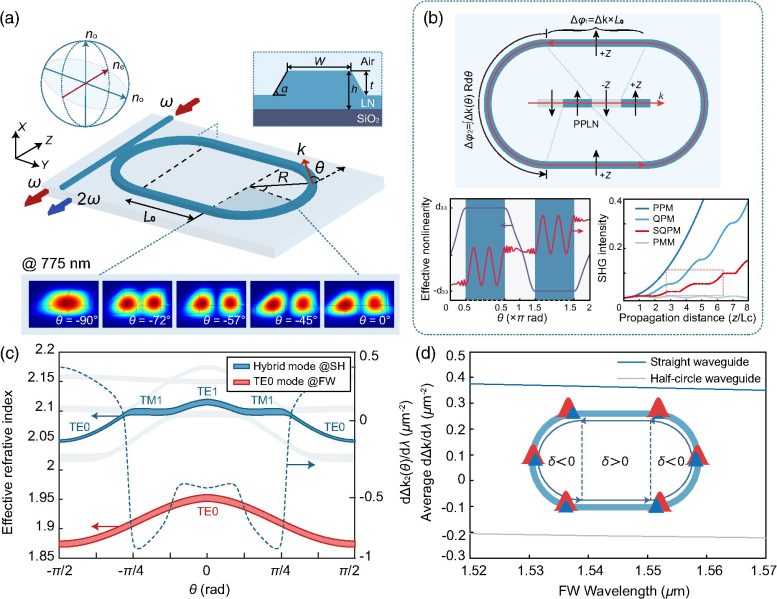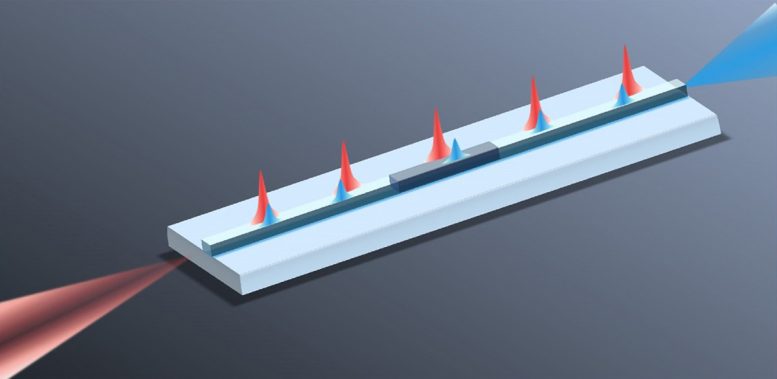

A recent breakthrough in frequency conversion has achieved substantial bandwidth, opening new possibilities for more efficient quantum information transfer and advanced integrated photonic systems.
Advancements in quantum information technology are enabling faster and more efficient data transfer. A major challenge, however, lies in transferring qubits—the fundamental units of quantum information—across different wavelengths while preserving their crucial properties, such as coherence and entanglement.
As reported in Advanced Photonics, researchers from Shanghai Jiao Tong University (SJTU) recently made significant strides in this area by developing a novel method for broadband frequency conversion, a crucial step for future quantum networks.

The SJTU team focused on a technique using X-cut thin film lithium niobate (TFLN), a material known for its nonlinear optical properties. They achieved broadband second-harmonic generation—an important process for converting light from one wavelength to another—with a remarkable bandwidth of up to 13 nanometers.
This was accomplished through a process called mode hybridization, which allows for precise control over the frequency conversion in a micro-racetrack resonator.
Wide Applications of the Technology
According to corresponding author Professor Yuping Chen, “An efficient second-order nonlinear process with widely-tunable pump bandwidth has been a long-pursued goal, owing to the extensive applications in wavelength division multiplexing networks, ultrashort pulse nonlinearity, quantum key distribution, and broadband single-photon source generation.”

She adds, “Thanks to the great progress in fabrication technology on the TFLN platform, this work will pave the way to chip-scale nonlinear frequency conversion between the ultrashort optical pulses and even the quantum states.”
This breakthrough could have wide-ranging implications for integrated photonic systems. By enabling on-chip tunable frequency conversion, it opens the door to enhanced quantum light sources, larger capacity multiplexing, and more effective multichannel optical information processing. As researchers continue to explore these technologies, the potential for expanding quantum information networks grows, bringing us closer to realizing their full capabilities in various applications.
Reference: “Chip-scale nonlinear bandwidth enhancement via birefringent mode hybridization” by Tingge Yuan, Jiangwei Wu, Xueyi Wang, Chengyu Chen, Hao Li, Bo Wang, Yuping Chen and Xianfeng Chen, 18 September 2024, Advanced Photonics.
DOI: 10.1117/1.AP.6.5.056012